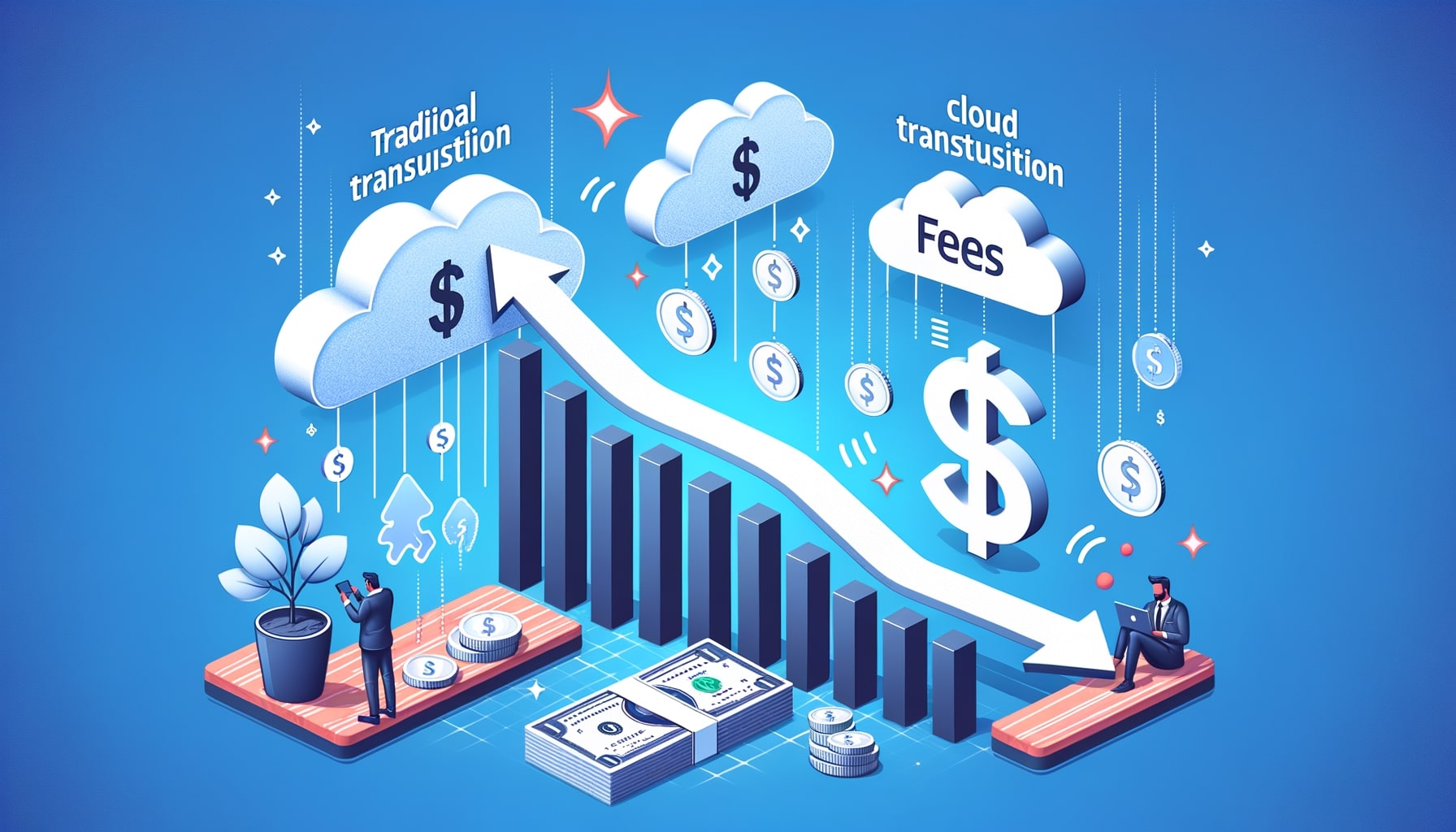Integrating Cloud Payments with Your Existing Systems
In today’s digital age, businesses are constantly seeking ways to streamline their operations and improve efficiency. One area where this is particularly important is in the realm of payments. Traditional payment methods, such as cash or checks, are becoming increasingly outdated and cumbersome. As a result, many businesses are turning to cloud payments as a more convenient and secure alternative.
Cloud payments integration refers to the process of connecting your existing systems, such as your point-of-sale (POS) system or e-commerce platform, with a cloud-based payment solution. This integration allows for seamless and real-time processing of payments, providing numerous benefits for both businesses and customers.
Benefits of Integrating Cloud Payments with Existing Systems
- Enhanced Efficiency: Integrating cloud payments with your existing systems eliminates the need for manual data entry and reconciliation. This automation saves time and reduces the risk of human error, allowing your staff to focus on more value-added tasks.
- Improved Customer Experience: Cloud payments integration enables businesses to offer a variety of payment options, including credit cards, mobile wallets, and online payments. This flexibility enhances the customer experience by providing convenient and secure payment methods.
- Real-Time Reporting and Analytics: Cloud payment solutions provide businesses with real-time access to transaction data and analytics. This allows for better decision-making and the ability to identify trends and opportunities for growth.
- Increased Security: Cloud payment solutions employ advanced security measures, such as encryption and tokenization, to protect sensitive customer data. By integrating these solutions with your existing systems, you can ensure that payment information is securely transmitted and stored.
- Scalability: Cloud payment solutions are highly scalable, allowing businesses to easily handle increased transaction volumes as they grow. This scalability eliminates the need for costly hardware upgrades and provides a seamless payment experience for customers.
Key Considerations for Cloud Payments Integration
Before integrating cloud payments with your existing systems, there are several key considerations to keep in mind:
- Compatibility: Ensure that the cloud payment solution you choose is compatible with your existing systems. This includes your POS system, e-commerce platform, and any other systems that handle payments.
- Security: Verify that the cloud payment solution meets industry security standards, such as Payment Card Industry Data Security Standard (PCI DSS) compliance. Additionally, consider any additional security measures, such as two-factor authentication, that may be necessary to protect customer data.
- Cost: Evaluate the cost of integrating cloud payments with your existing systems, including any upfront fees, transaction fees, or ongoing maintenance costs. Consider the potential return on investment and the long-term benefits of improved efficiency and customer experience.
- Support and Training: Ensure that the cloud payment solution provider offers adequate support and training for your staff. This will help to minimize disruptions during the integration process and ensure that your team is equipped to handle any issues that may arise.
Understanding the Different Cloud Payment Solutions
There are several different types of cloud payment solutions available, each with its own unique features and benefits. Understanding these solutions will help you choose the one that best fits your business needs:
- Payment Gateways: Payment gateways act as a bridge between your website or POS system and the payment processor. They securely transmit payment information and facilitate the authorization and settlement of transactions. Popular payment gateways include PayPal, Stripe, and Authorize.Net.
- Mobile Wallets: Mobile wallets, such as Apple Pay and Google Pay, allow customers to make payments using their smartphones. These wallets securely store payment information and can be used for both online and in-store purchases.
- Point-of-Sale Systems: Cloud-based POS systems, such as Square and Shopify, offer integrated payment processing capabilities. These systems allow businesses to accept payments in-store and online, manage inventory, and generate sales reports.
- Virtual Terminals: Virtual terminals enable businesses to accept payments over the phone or through mail orders. These cloud-based solutions eliminate the need for physical card terminals and allow for secure payment processing.
Step-by-Step Guide to Integrating Cloud Payments
Integrating cloud payments with your existing systems may seem like a daunting task, but with careful planning and execution, it can be a smooth process. Here is a step-by-step guide to help you through the integration:
- Assess Your Current Systems: Begin by assessing your current systems and identifying any gaps or areas for improvement. Consider the specific payment methods you want to offer and the features you require, such as real-time reporting or recurring billing.
- Research Cloud Payment Solutions: Research different cloud payment solutions and compare their features, pricing, and compatibility with your existing systems. Consider factors such as security, scalability, and customer support.
- Choose a Cloud Payment Solution: Select the cloud payment solution that best meets your business needs. Ensure that it integrates seamlessly with your existing systems and offers the features and security measures you require.
- Prepare Your Systems: Before integrating the cloud payment solution, ensure that your existing systems are up to date and compatible. This may involve updating software, installing necessary plugins or APIs, or making any required hardware upgrades.
- Test the Integration: Before going live, thoroughly test the integration between your existing systems and the cloud payment solution. This includes testing different payment methods, processing refunds, and ensuring that transaction data is accurately recorded.
- Train Your Staff: Provide comprehensive training to your staff on how to use the new payment system and handle any issues that may arise. This will help to minimize disruptions and ensure a smooth transition for both your team and customers.
- Go Live and Monitor Performance: Once you are confident in the integration, go live with the new cloud payment solution. Monitor its performance closely, ensuring that transactions are processed accurately and securely. Address any issues promptly to minimize disruptions to your business.
Common Challenges and Solutions in Cloud Payments Integration
While integrating cloud payments with your existing systems offers numerous benefits, it can also present some challenges. Here are some common challenges and their solutions:
- Compatibility Issues: One of the most common challenges in cloud payments integration is compatibility issues between different systems. To overcome this, ensure that the cloud payment solution you choose is compatible with your existing systems. Work closely with the solution provider and your IT team to address any compatibility issues that may arise.
- Data Security: Data security is a top concern when integrating cloud payments. To mitigate this risk, choose a cloud payment solution that is PCI DSS compliant and employs advanced security measures, such as encryption and tokenization. Regularly update and patch your systems to protect against potential vulnerabilities.
- User Experience: A seamless user experience is crucial for successful cloud payments integration. Ensure that the payment process is intuitive and user-friendly, both for your staff and customers. Test the integration thoroughly to identify any usability issues and address them before going live.
- Training and Support: Lack of proper training and support can hinder the integration process. Ensure that your staff receives comprehensive training on how to use the new payment system and handle any issues that may arise. Work closely with the cloud payment solution provider to address any support needs and ensure a smooth transition.
Best Practices for Successful Cloud Payments Integration
To ensure a successful cloud payments integration, consider the following best practices:
- Plan Ahead: Proper planning is crucial for a smooth integration process. Clearly define your goals and requirements, assess your current systems, and research different cloud payment solutions before making a decision.
- Choose the Right Solution: Select a cloud payment solution that aligns with your business needs and offers the features and security measures you require. Consider factors such as compatibility, scalability, and customer support.
- Test Thoroughly: Thoroughly test the integration between your existing systems and the cloud payment solution before going live. Test different payment methods, process refunds, and ensure that transaction data is accurately recorded.
- Communicate with Stakeholders: Effective communication with stakeholders, including your staff and customers, is essential for a successful integration. Keep them informed about the integration process, address any concerns or questions, and provide training and support as needed.
- Monitor Performance: Once the integration is live, closely monitor its performance to ensure that transactions are processed accurately and securely. Regularly review transaction data and analytics to identify any issues or areas for improvement.
Frequently Asked Questions about Cloud Payments Integration
Q.1: What is cloud payments integration?
Cloud payments integration refers to the process of connecting your existing systems, such as your POS system or e-commerce platform, with a cloud-based payment solution. This integration allows for seamless and real-time processing of payments, enhancing efficiency and improving the customer experience.
Q.2: What are the benefits of integrating cloud payments with existing systems?
Integrating cloud payments with existing systems offers several benefits, including enhanced efficiency, improved customer experience, real-time reporting and analytics, increased security, and scalability.
Q.3: What are the key considerations for cloud payments integration?
Key considerations for cloud payments integration include compatibility with existing systems, security measures, cost, and support and training for staff.
Q.4: What are the different types of cloud payment solutions?
Different types of cloud payment solutions include payment gateways, mobile wallets, point-of-sale systems, and virtual terminals.
Q.5: What are some common challenges in cloud payments integration?
Common challenges in cloud payments integration include compatibility issues, data security concerns, user experience issues, and lack of proper training and support.
Conclusion
Integrating cloud payments with your existing systems offers numerous benefits for businesses, including enhanced efficiency, improved customer experience, real-time reporting and analytics, increased security, and scalability. However, successful integration requires careful planning, thorough testing, and effective communication with stakeholders.
By considering key factors such as compatibility, security, cost, and support, businesses can choose the right cloud payment solution and ensure a smooth integration process. By following best practices and learning from successful case studies, businesses can overcome common challenges and reap the rewards of cloud payments integration.
As technology continues to evolve, cloud payments integration will become increasingly important for businesses of all sizes. By embracing this digital transformation, businesses can stay ahead of the competition, provide a seamless payment experience for customers, and drive growth and success in the digital age.










